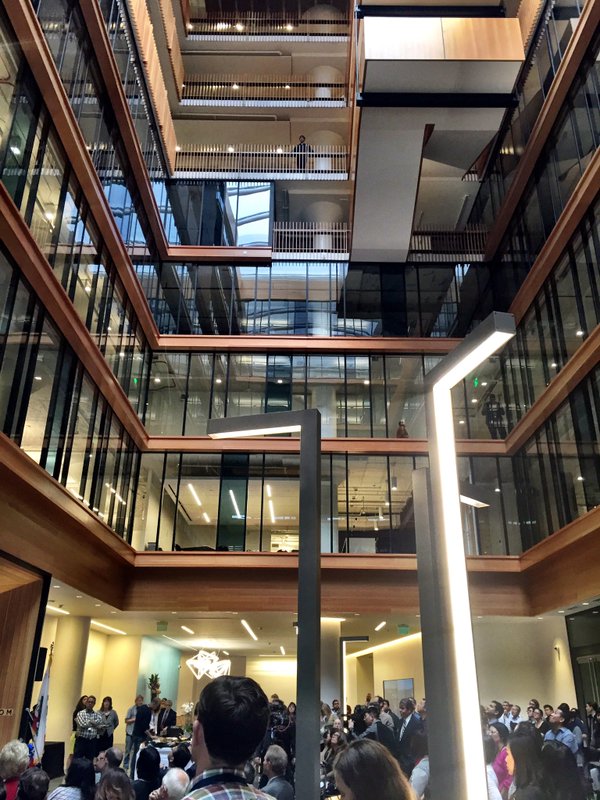By Steve Nadel
 Four years. Endless meetings. Hundreds if not thousands of public comments. Finally, overcoming opposition from its own staff, the board of directors of the Bay Area Air Quality Management District (BAAQMD) set a date — May 2017 — to vote on a plan that would set enforceable numeric limits on pollution from oil refineries: greenhouse gases, toxic chemicals, and dangerous particulate matter.
Four years. Endless meetings. Hundreds if not thousands of public comments. Finally, overcoming opposition from its own staff, the board of directors of the Bay Area Air Quality Management District (BAAQMD) set a date — May 2017 — to vote on a plan that would set enforceable numeric limits on pollution from oil refineries: greenhouse gases, toxic chemicals, and dangerous particulate matter.
By unanimous vote, the board of directors gave staff clear marching orders at its July 20th meeting: Produce draft regulations based on the Community-Worker proposal to cap refinery emissions at their current levels (see the end of this article for the text of the Community-Worker proposal). This rule is important, not only to protect our health and safety and the planet, but to prevent the Bay Area from becoming a major outlet for tar sands crude oil. That’s because refining tar sands crude produces much higher levels of both health-harming pollution and greenhouse gases.
But there was a catch. The caps proposal was paired with a BAAQMD staff proposal for a massive program to reduce emissions at all industrial facilities. That’s a worthy goal, but the process could take up to 10 years. Unless refinery emissions are capped at their current levels, pollution could rise disastrously while that lengthy process goes on.
The staff proposal was another effort by the BAAQMD bureaucracy to delay and divert attention from our caps proposal. The staff proposed a plan to do Health Risk Assessments (HRAs) on all industrial sources of pollution. That means doing a detailed analysis of potential health impacts of various amounts of each chemical in the pollution emitted by all industrial facilities in the Bay Area.
The positive aspect of the staff proposal is that it would set a stricter standard for protecting health. A Health Risk Assessment (HRA) calculates how many deaths per million would be caused by exposure to different amounts of each chemical. The current standard is that exposure should not cause more than 100 deaths per million people. The new rules would bring this down, first to 25 deaths per million and then to 10 deaths per million — among the strictest levels in the nation. Industrial facilities would be required to install “Best Available Retrofit Control Technology” to bring their emissions down to these levels.
However, the entire process — doing an extensive HRA, determining and agreeing on needed retrofits, installing them, demonstrating their efficacy, and remediating retrofits that don’t achieve necessary goals — can easily take 5 to 10 years or even more. Moreover, this process needs to be done on a case-by-case basis for thousands of individual industrial pollution sources. Without a cap in place, emissions will inevitably increase during these extended studies.
The board set a specific schedule for the work on the two proposals:
- Notice of preparation of Environmental Impact Report (EIR) and draft regulation released, respectively, by August 19* and October 15, 2016, with public workshops and comments complete by December 2016.
- Draft EIR, socioeconomic analysis, staff report, and final regulatory language for both proposals released by March 3, 2017.
- Required public meetings and comment periods completed by April 19, 2017.
- BAAQMD board of directors vote by May 17, 2017.
The board will monitor progress. If combining the two regulations is delaying adoption of the emissions cap, they will separate the two rules, as we have been demanding all along.
(*Note: The significance of the August 19th date is that regardless of the final completion date, this sets the reference time used to calculate the current refinery emissions baseline: the level at which they would be capped.)
WhatYouCanDo
Without intensive public pressure staff will slip back into delay-and-divert mode yet again. So, to ensure the board holds staff to this schedule, we are mobilizing a grassroots campaign in the whole nine-county Bay Area, encouraging city councils to pass resolutions supporting caps on refinery emissions.
So far the city councils of El Cerrito, Emeryville, Oakland, Richmond, and San Francisco have stepped up and endorsed our call for rapid completion of rules for emission caps. San Pablo, San Leandro, and Union City already have similar resolutions on their September agendas.
It will take a majority of the 24-member BAAQMD board of directors to vote and pass the regulation limiting refinery emissions. Gathering support resolutions from city councils and other elected bodies in their districts is the best way to ensure that board members do their job and protect our communities. This is citizen democracy at its most basic: community residents stepping up to demand their elected representatives act to protect their health and safety.
Dozens of elected bodies remain to be contacted. We need members of all communities to bring this resolution to their local elected bodies. Join us at our bi-weekly meetings held on the 2nd and 4th Wednesdays of each month, at the Sierra Club office, 2530 San Pablo Avenue in Berkeley. To confirm meeting times, contact sunflowerjsj@gmail.com.
For more information about the Community-Worker Proposal, the draft resolution and the support letter from refinery workers of United Steel Workers Local 5, explore the following documents: